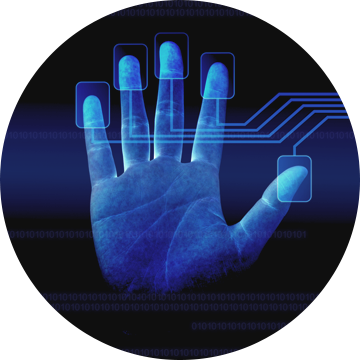The two-factor authentication is used to verify the user´s identity. Two factors, which are independent of each other, are used (“Possession” and “Knowledge”) One example is cash withdrawal at an ATM. The user identifies with the own credit card (Factor: Possession) and the entry of the PIN (Factor: Knowledge). A secure login considers common threats (e.g. phishing, man-in-the-middle attacks, or malware). The main problem for the website provider, respectively the main incentive for the attackers, are passwords and, as a result, the problem that they can be intercepted during transmission or accidental entry on a bogus website. Even complete password lists can be stolen during a server intrusion. This authentication procedure , respectively login procedure, relies on our Public Key Infrastructure (PKI). For this authentication type the actual user “identification” is outsourced and does not take place anymore on the system to which the user wants to log in. One huge benefit of this is that the web service does no longer have to take care about the implementation of cryptographic procedures for the protection of secret access data for authentication.The service is connected with the SecSign ID server via completely implemented interfaces. The SecSign ID server then takes care of the user authentication and thus protects the user´s login and the server of the service. With the ID server you cannot only provide your users with a secure login but also have a central control and defense instance for all your company logins. With SecSign ID you receive a highly secure and convenient two-factor user authentication per smartphone on basis of a PKI (Public Key Infrastructure). The used challenge response procedure is based on asymmetric encrpytion with 2048-bit key pairs.Platform-independent two-factor authentication for sensitive business data
Dangers for your company due to the use of password-based logins belong to the past! Protect your logins with a user-friendly two-factor authentication which is based on strong Public Key Infrastructure


Two-factor authentication / Multi-factor authentication
Two-factor authentication (2FA) for the protection against phishing and brute force attacks

With SecSign ID two-factor authentication (2FA) you can operate an own identity and access control server as on-premise solution
You want to learn more about SecSign ID or try out the convenient two-factor authentication?
SecCommerce
Menü
Electronic Signatures
- The Signature Portal
- Signature types
- Signature tools for end users
- FAQ (SecSigner)
- Signatures in web applications
- Substitute scanning and signing (e-records)
- Digital mailroom and digital signature for incoming mail
- Multiple signatures used for workflow
- Verification and creation of mass signatures or individual signatures on server side
- Long term archiving with hash trees
- Remote Qualified Electronic Signature
- Electronic Seal eIDAS
- Identity and Access Management IdM 2FA
Encryption
Private Cloud
High security and easy to use
Client Software
SecSigner
Create electronic signatures
SecCardAdmin
Administration of signature cards
Signatur Workflows
Signature Portal
Complex signature workflows with all signature types
SecArchive
Substitute scanning
SecPKI Server
Central server of several products
SecVerification Server
Verification & decryption
SecSigner Server
encryption & signature creation
Two Factor Authentication
SecRouter
Secures website access
SecAuthenticator
User identification
SecSignID
Two Factor Authentication
SecSignID Server
SecSignID on-premise solution
File storage & sharing
SecSign Portal Server
Secure messaging and file sharing